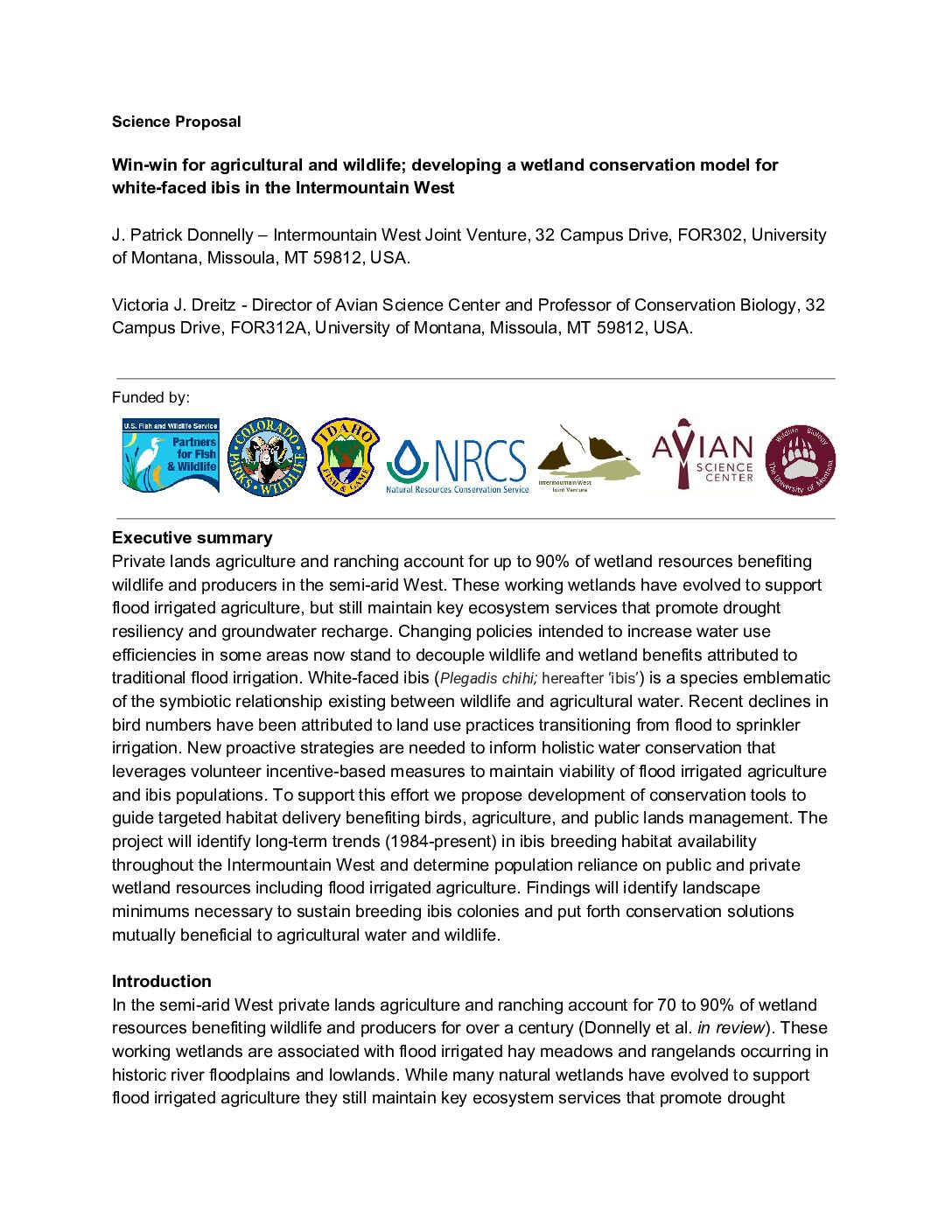-

·
Managing Wet Areas on Agricultural Lands Handbook
The San Luis Valley Wetland Focus Area Committee (FAC) is pleased to help support the development and production of this booklet promoting management of wetlands, riparian areas, and agricultural areas towards a better and healthier ecosystem. The FAC is a group of people from various wildlife, water, and land agencies, non-profit organizations and interested citizens.…
-

·
Greater Sandhill Crane Habitat Initiative
This plan is a continuation of 2012 science planning, characterizing the scope and context of the Intermountain West Joint Venture’s (IWJV) science investments. This initiative is intended to serve as an important catalyst and complement to partner efforts in filling critical, broad-scale information needs for wetland birds throughout the Intermountain West. Access this document here.
-

·
Win-win for agricultural and wildlife; developing a wetland conservation model for white-faced ibis in the Intermountain West
Executive Summary Private lands agriculture and ranching account for up to 90% of wetland resources benefiting wildlife and producers in the semi-arid West. These working wetlands have evolved to support flood irrigated agriculture, but still maintain key ecosystem services that promote drought resiliency and groundwater recharge. Changing policies intended to increase water use efficiencies in…

